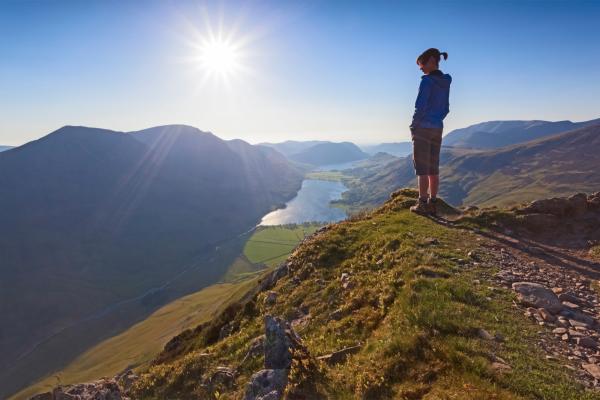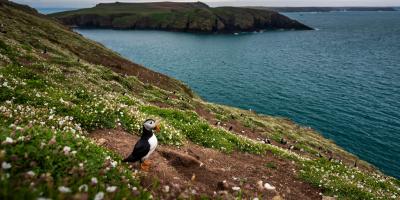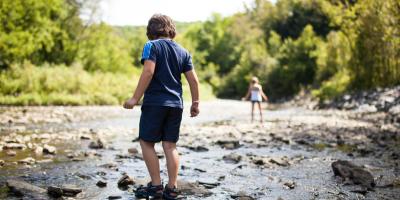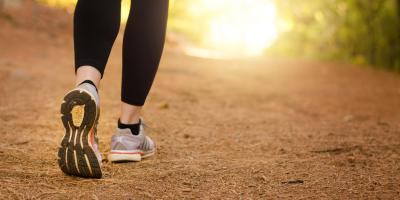"After a day’s walk, everything has twice its usual value." So wrote the historian and author GM Trevelyan, who in the 1930s became the first president of Youth Hostels Association. He was a committed lover of the British landscape, recognising long ago that the outdoors was the greatest of balms to the soul. And pertinently, he was also a lifelong hiker, memorably describing his legs as the two doctors that kept him hale and hearty. Walking comes in many forms. What’s your route of choice? A long trek culminating at a pub fireside? A hostel-to-hostel fell-walk leading you slowly but satisfyingly across the OS grids?
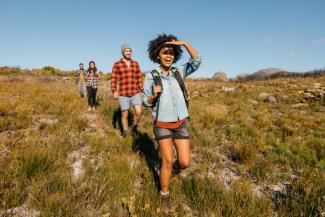
Call it trekking. Call it yomping, wandering, backpacking or plain old walking. The concept of covering long distances on foot is as old as humanity itself — our hunter-gatherer forebears needed to be mobile, after all — and while hiking for pleasure can’t claim the same ageless timescale, it’s emphatically nothing new or modern. The pastime has, however, evolved greatly over the past two and a half centuries, and particularly within the 95-year lifespan of YHA.
Consider these dates. In 1778, Father Thomas West published A Guide to the Lakes, the very first outdoor guidebook to the Lake District. In 1824, the earliest known ramblers’ group was established in York, some eight decades before 12 such groups banded together to form the first Federation of Rambling Clubs in 1905. In 1932, the now-fabled Kinder Scout Mass Trespass took place — a demand for greater rights to roam — and in 1965 the Pennine Way was inaugurated as the country’s first official long-distance trail (there are now 16 across England and Wales). The enactment of the Countryside and Rights of Way Act in 2000, bringing broader freedoms for walkers, was a further landmark.
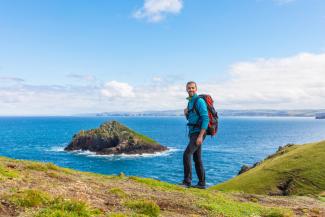
Today, according to The Ramblers — current membership in excess of 100,000 — there are more than 140,000 miles of rights of way in England and Wales. Huge swathes of the map still remain jarringly off-limits (that’s a whole other, rather more bitter, feature), but whether it’s a 20-minute dog walk or a two-month coastal epic, we’re a nation that loves pulling on our boots and striding out of the door.
And we do it, in short, because it brings us joy. The philosopher Bertrand Russell wrote in 1956 that unhappy people “would, I am convinced, increase their happiness more by walking six miles every day than by any conceivable change of philosophy”. That was almost 70 years ago, but it’s perhaps even truer today than it was then.
To hike is to have the chance to decompress, to mull things over, to unlock knotty problems, to talk, to reflect and to lose yourself in your surrounds. When you’re on Glyder Fawr with the wind in your hair and craggy valleys at your feet, nature has a way of putting things in perspective. In an age of screen addiction, rolling news and culture wars, the appeal of being able to fix your eyes on the horizon and walk away from digital demands — both literally and metaphorically — is huge.

Hiking is an activity that relies on having the time to undertake it. During the Industrial Revolution, it became common for 19th-century factory workers to escape the smoky confines of the city to go hill-walking at weekends; on those precious days off, swapping the deafening clank of the manufacturing floor for the breeze and birdsong of the countryside held a powerful allure. By the 1920s and 1930s, meanwhile, when reduced working hours and a greater living wage started to grant people more leisure time and extra income, this flow of hikers had grown from a stream to a surge.
Those between-the-wars wayfarers might well have been open-mouthed to learn how the pastime has grown to become a bona fide cultural mainstay. Magazines, TV programmes, podcasts and slick social media posts all extol the virtues of different walks, international kit brands invest in multi-million pound advertising campaigns, and the waymarked 2,674-mile England Coastal Path is close to joining the 870-mile Wales Coastal Path in being completed.
Crucially, it’s also taken strides to become a more inclusive hobby. The rise of walking groups such as Black Hikers, Steppers UK and Every Body Outdoors — in tandem with a marked increase in accessible walking trails — has helped hiking to begin to change its traditional image. At the same time, awareness around its importance to both physical and mental health, particularly for young people, has never been greater.
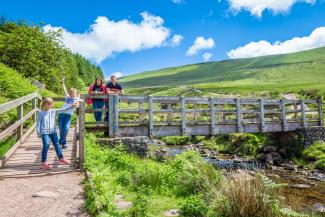
A woodland saunter with the kids, perhaps, a clifftop ramble or a group ascent to a local summit? Some get a kick from ticking off the best-known trails and peaks in the UK while others seek out less trammelled paths, but regardless of the specifics, it also remains that choicest of outdoor hobbies: one that’s feasible all year, open to all ages, and free.
YHA’s month-long Festival of Walking returns this autumn, taking place between Friday 12th September and Sunday 12th October, with free, guided social walks from many of our hostels. If you’re yet to get the bug, why not join one? Think of it as a chance to get closer to nature, to meet new people and to put some miles in your legs. Few things clear the mind more than placing one foot in front of the other — indeed, the American activist Rebecca Solnit summed up its rare, liberating qualities when she penned the following in her book, Wanderlust: A History of Walking.
"Doing nothing is hard to do,” she wrote. “It’s best done by disguising it as doing something, and the something closest to doing nothing is walking."
